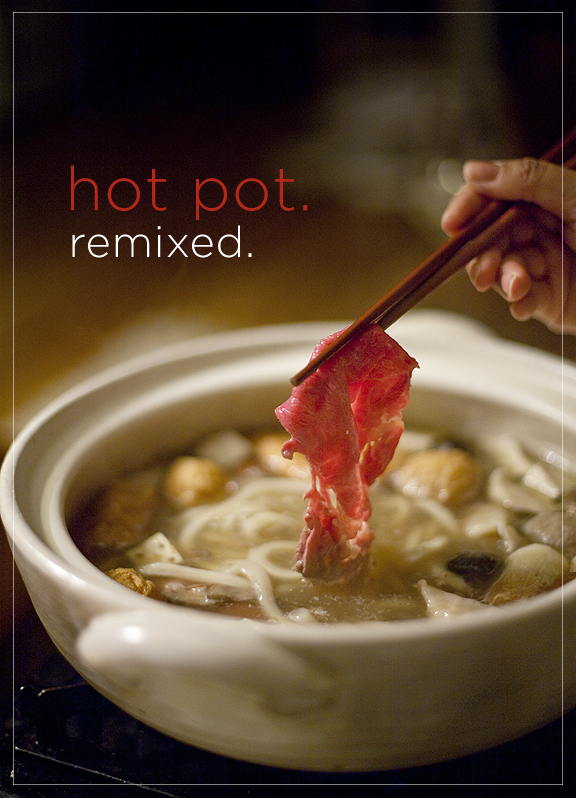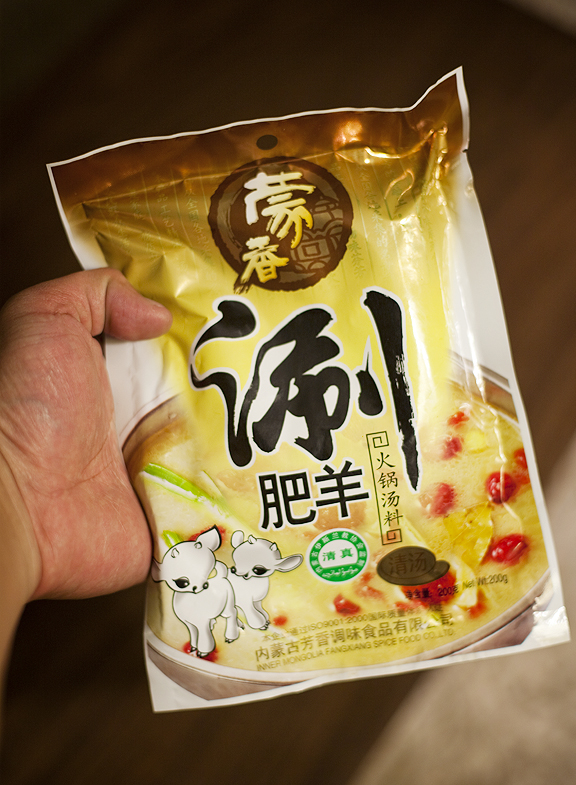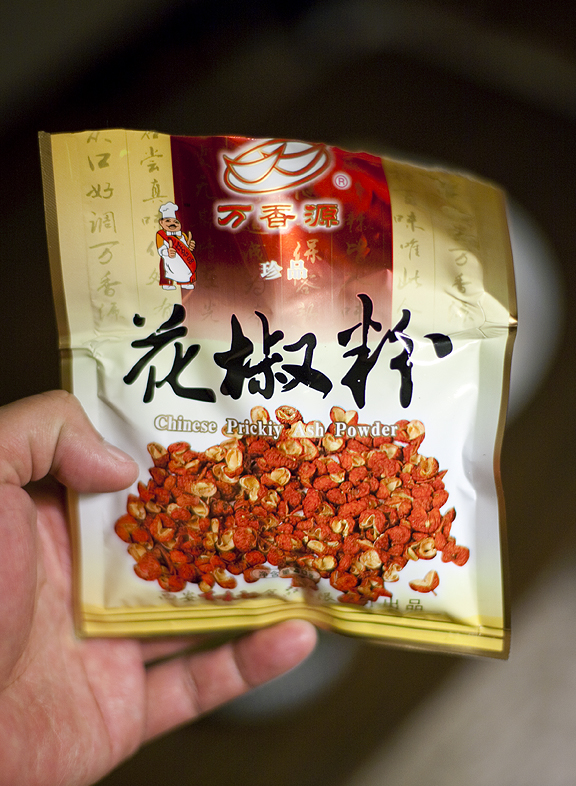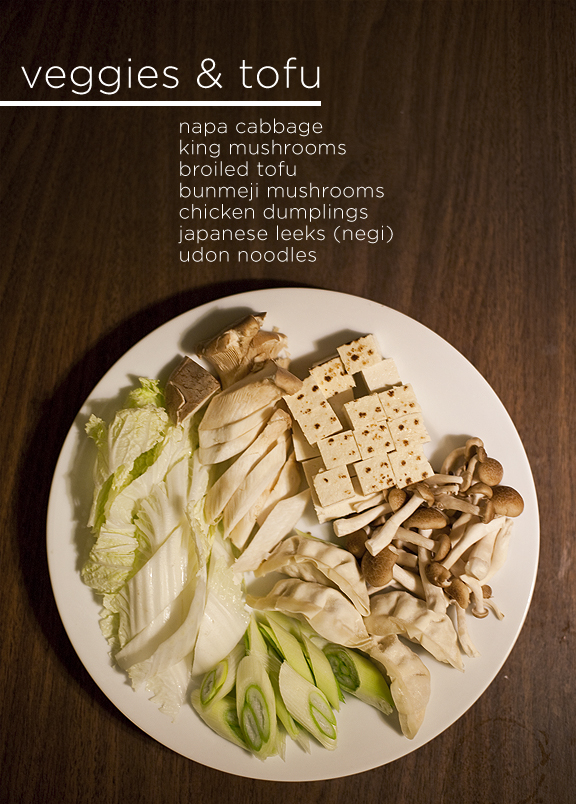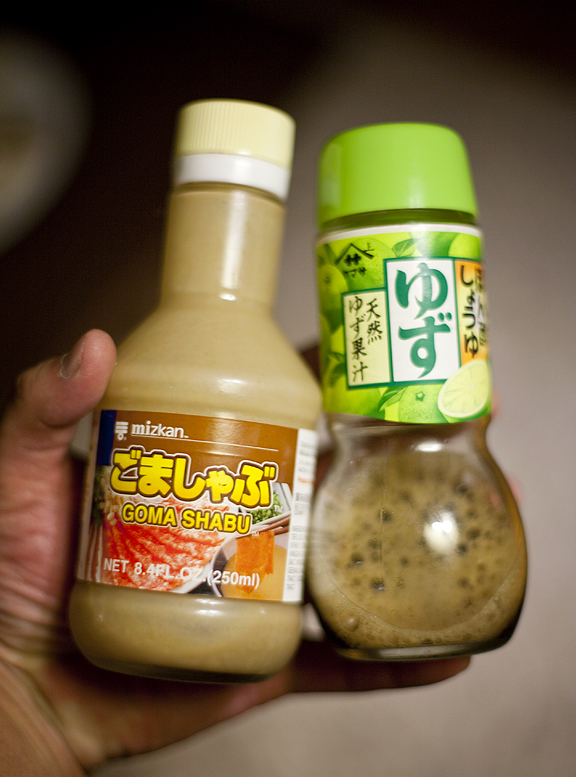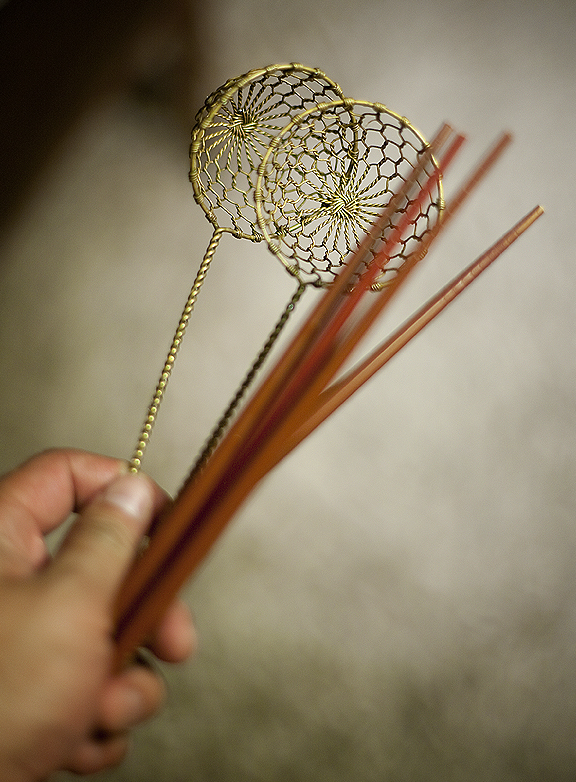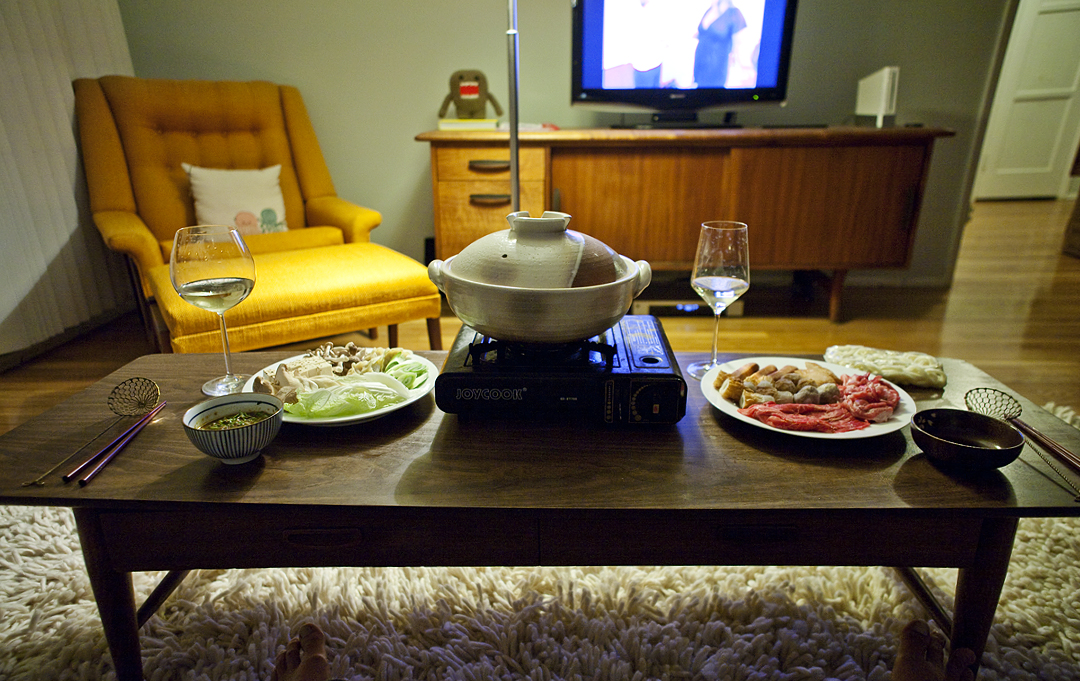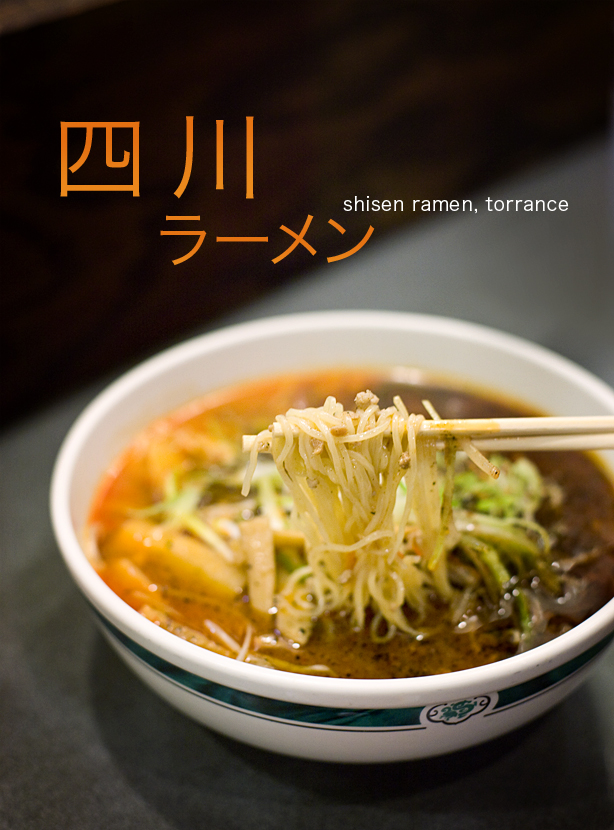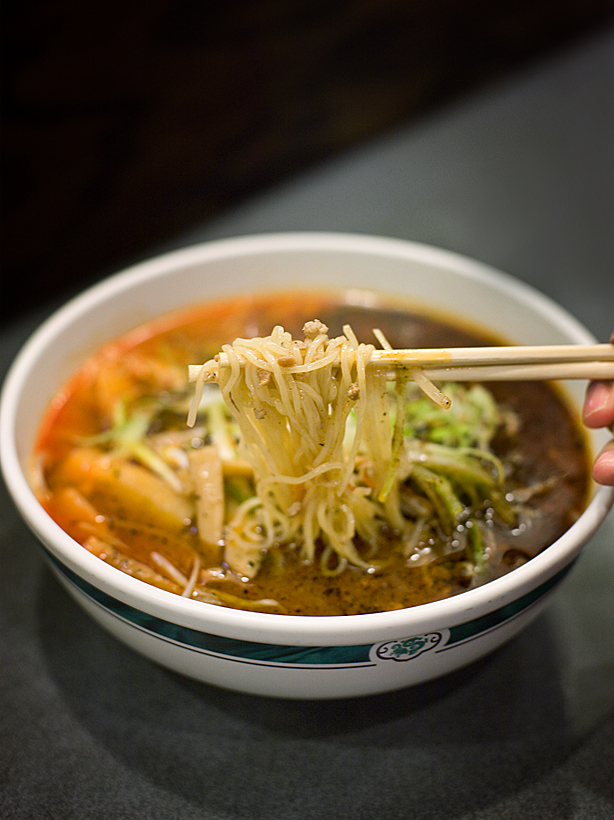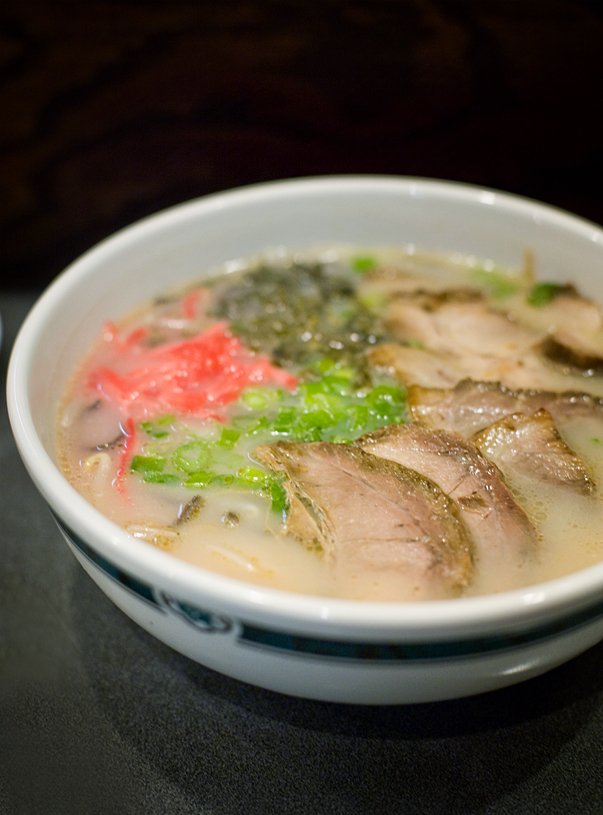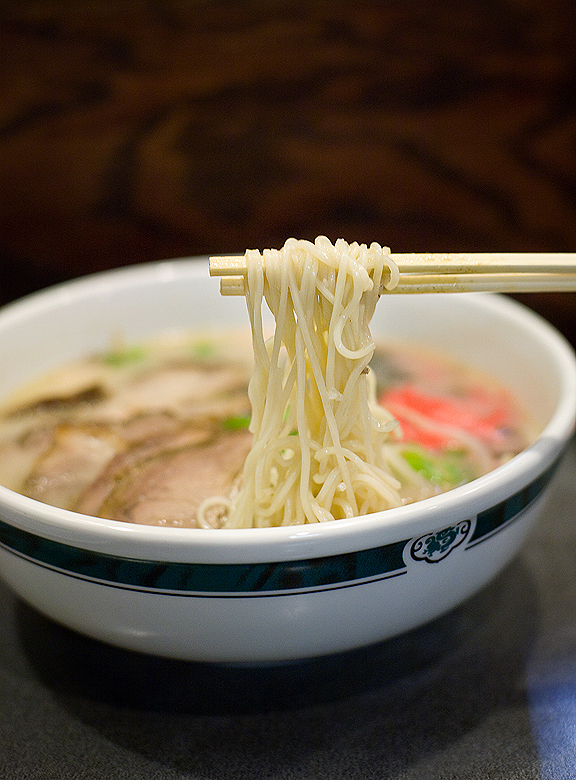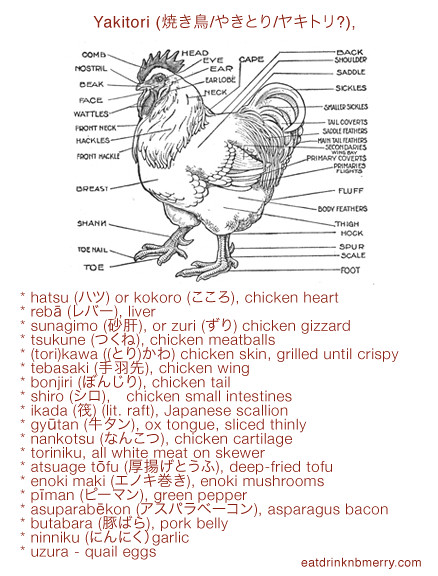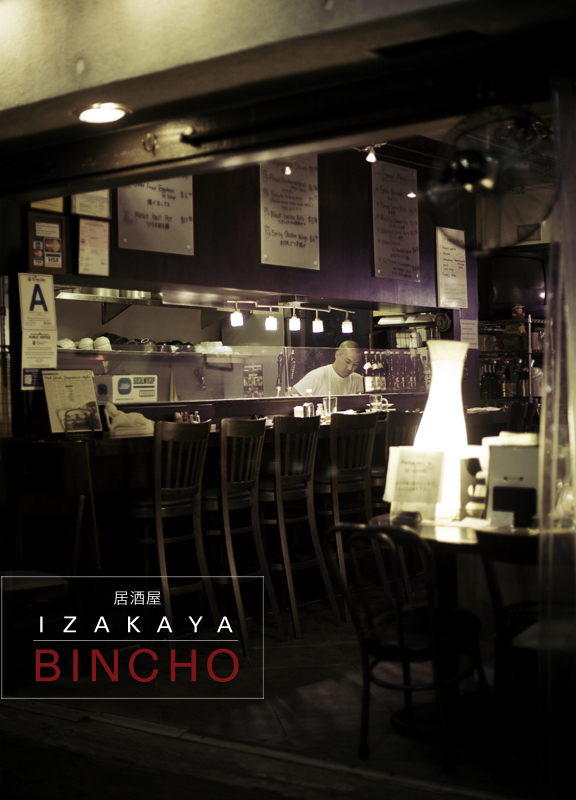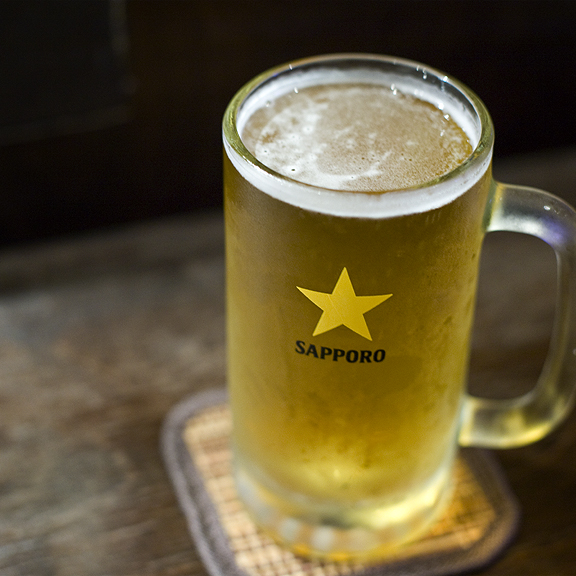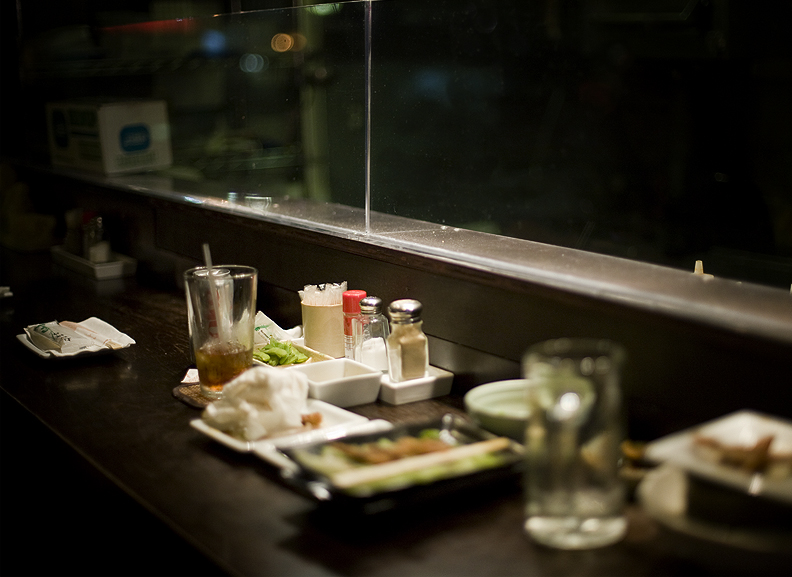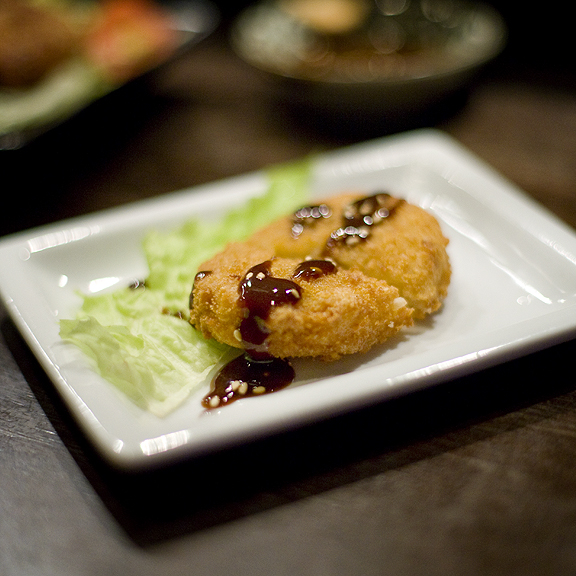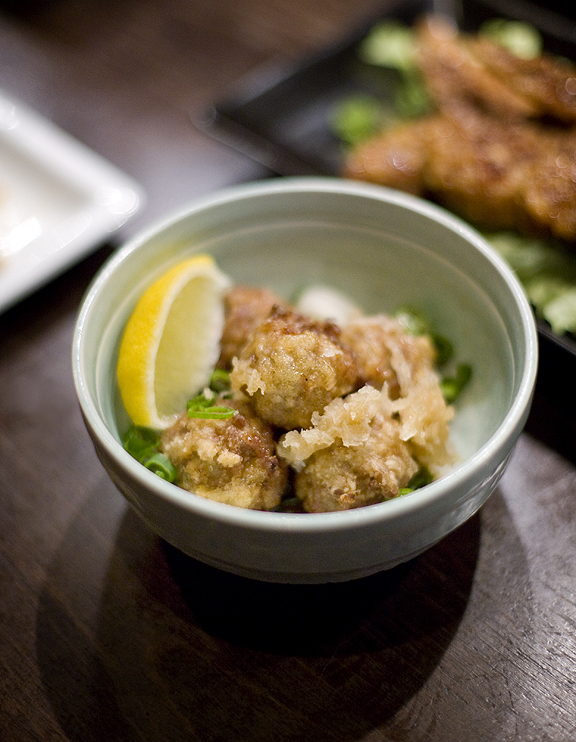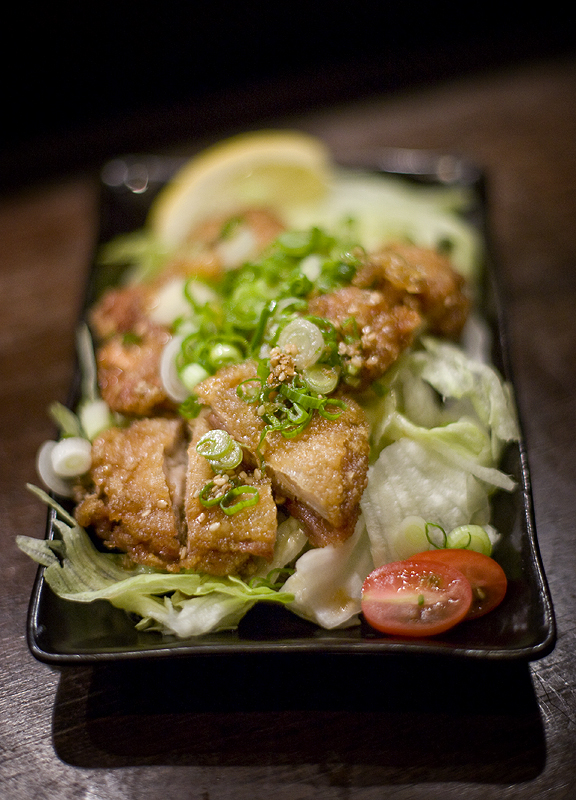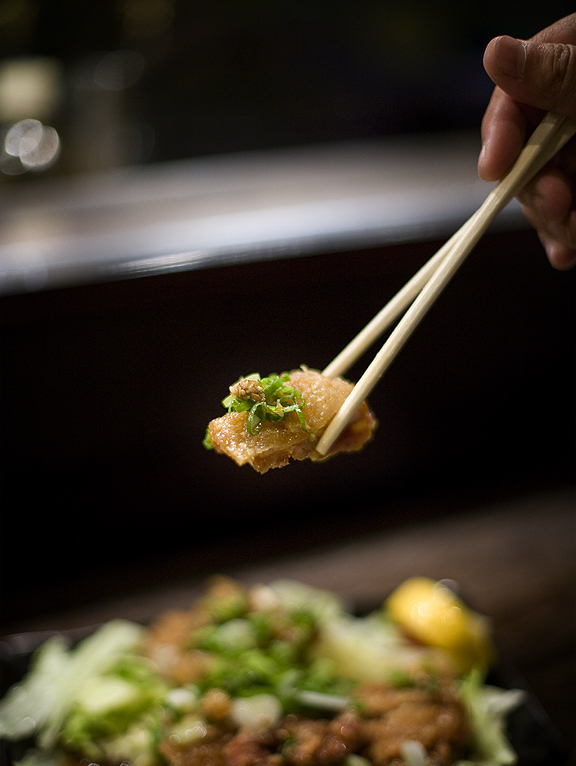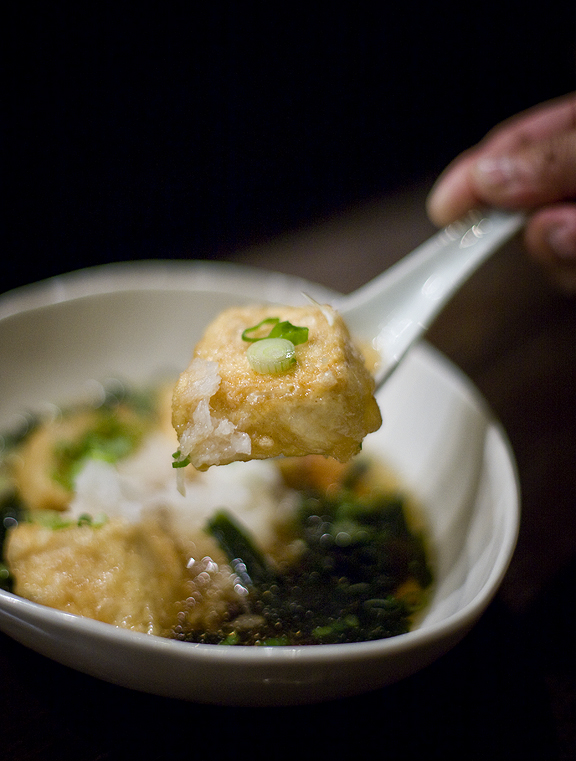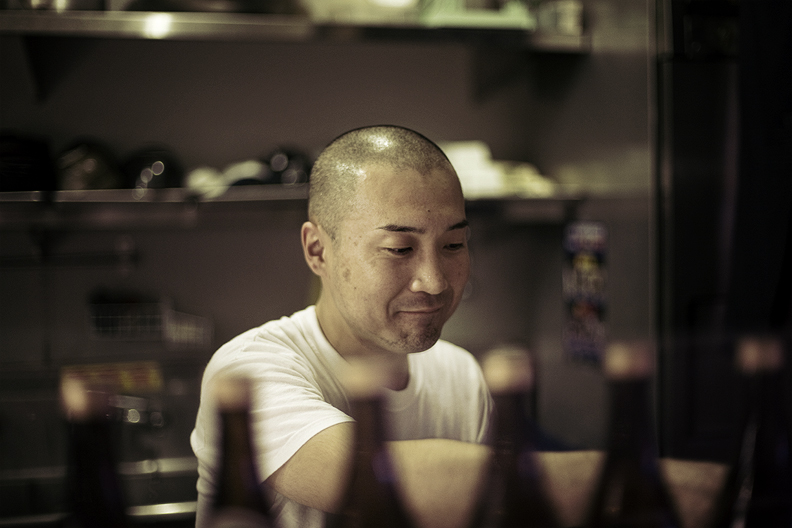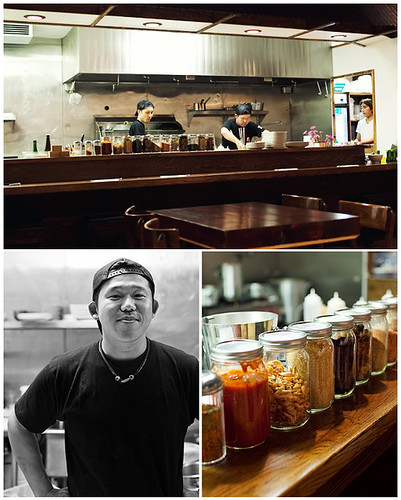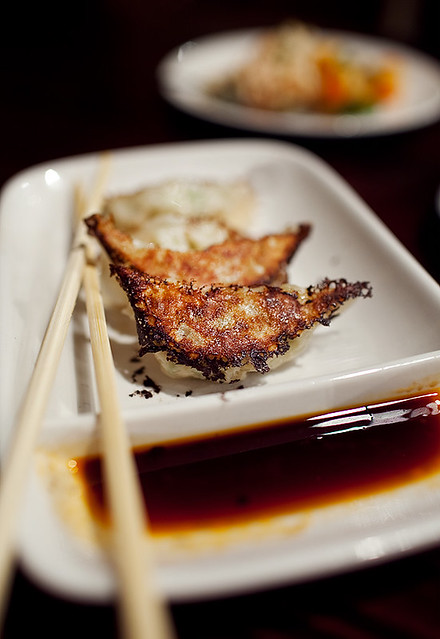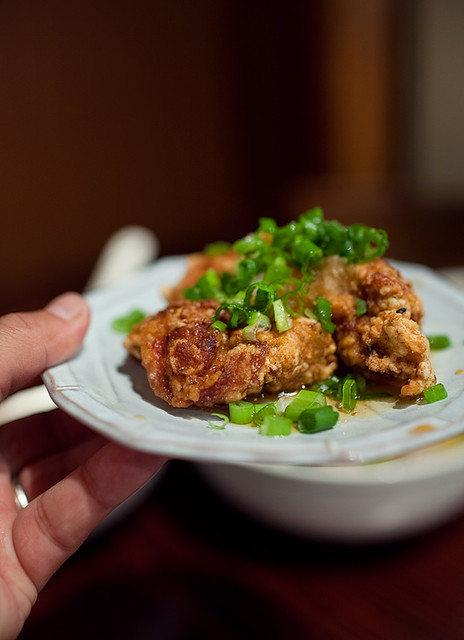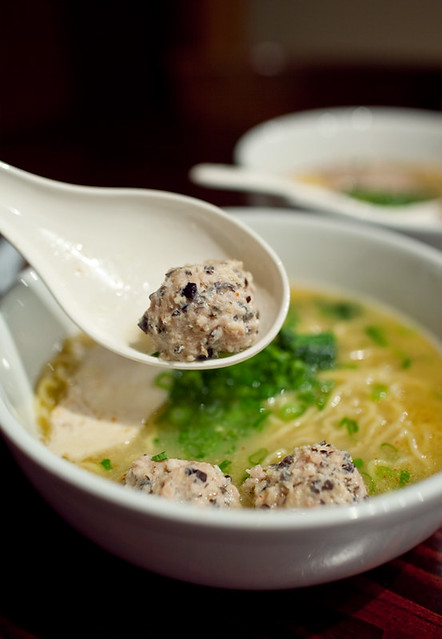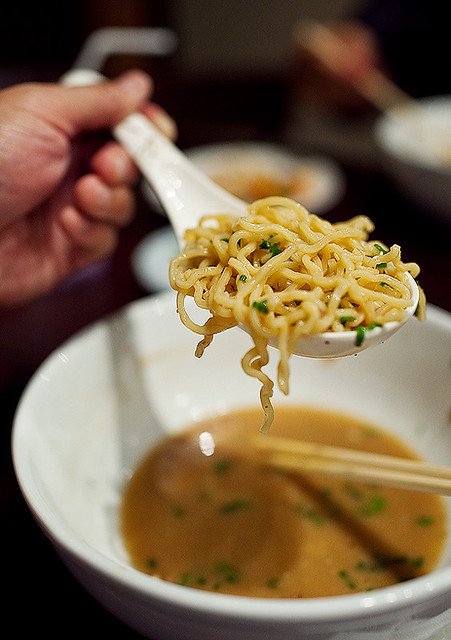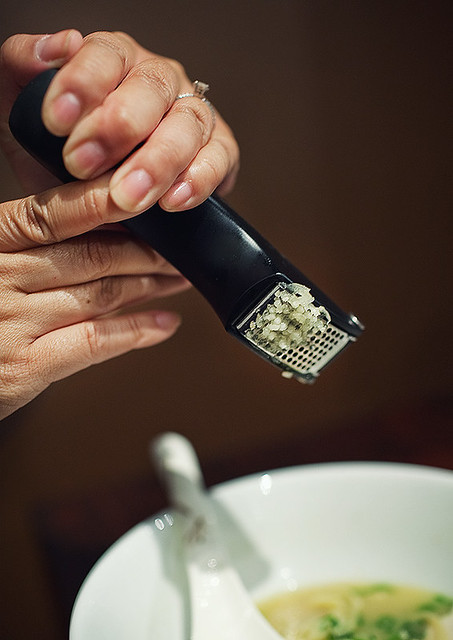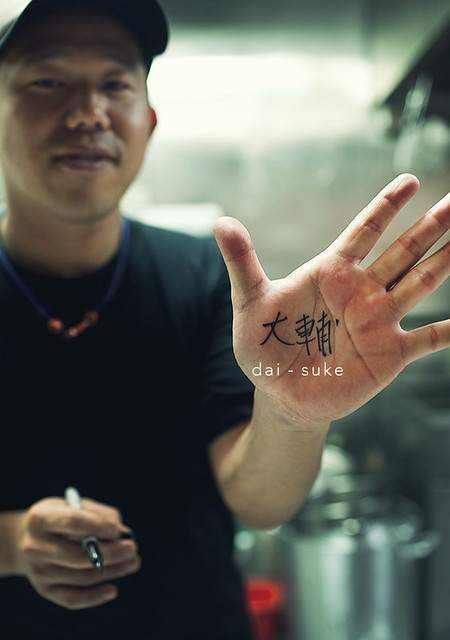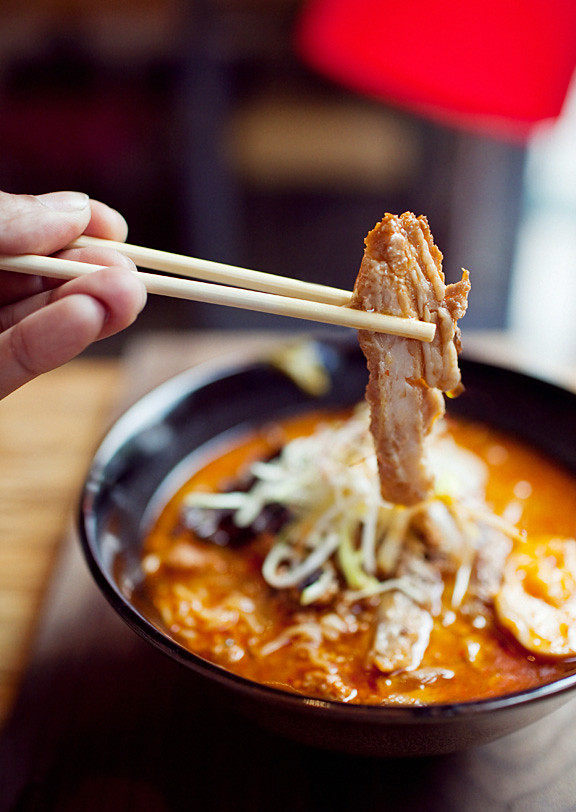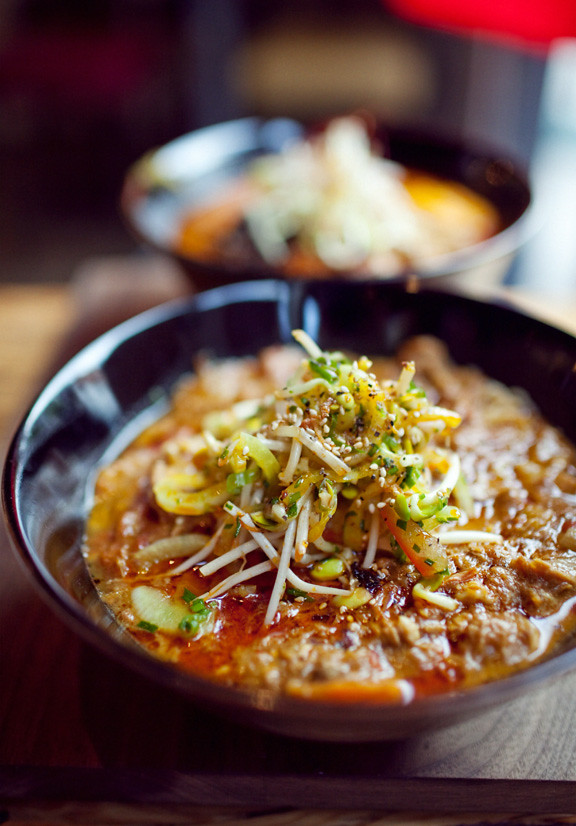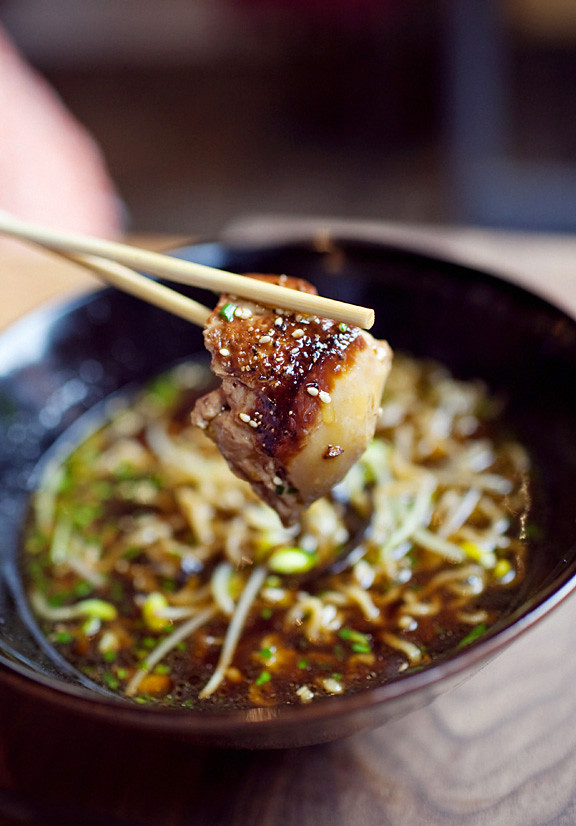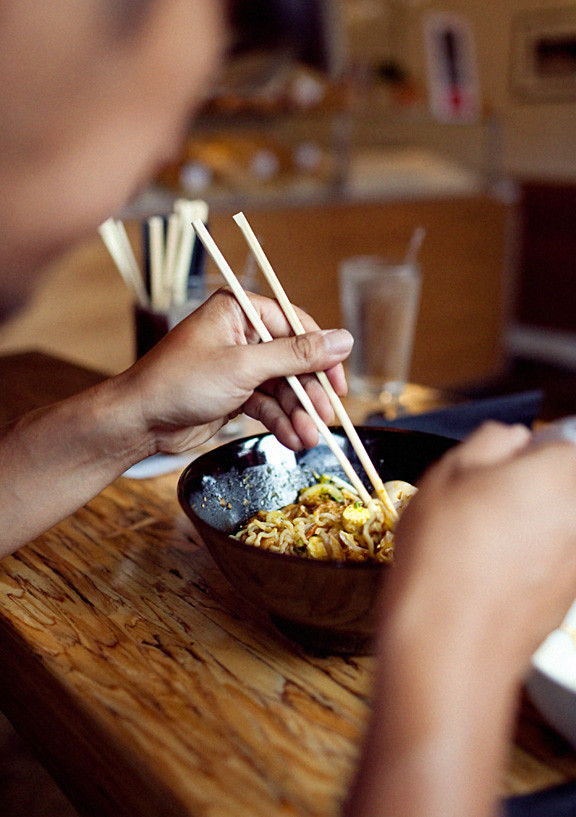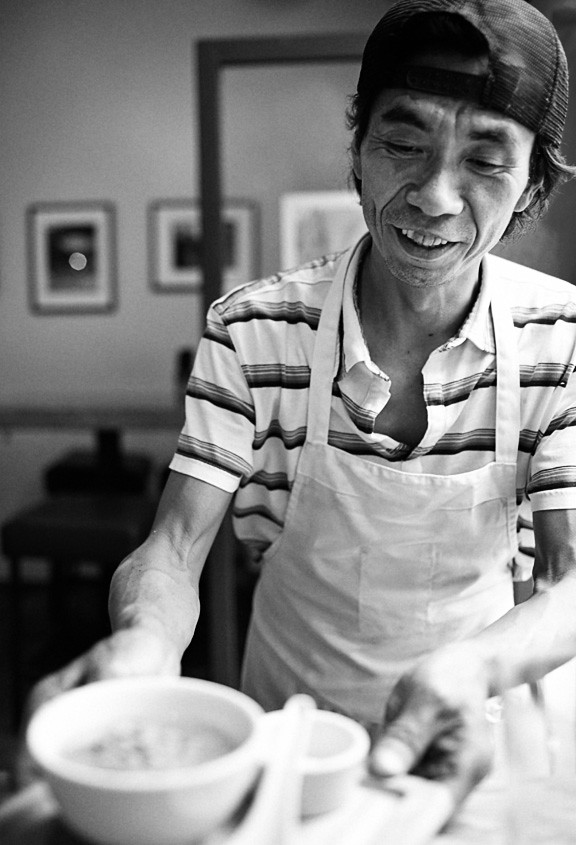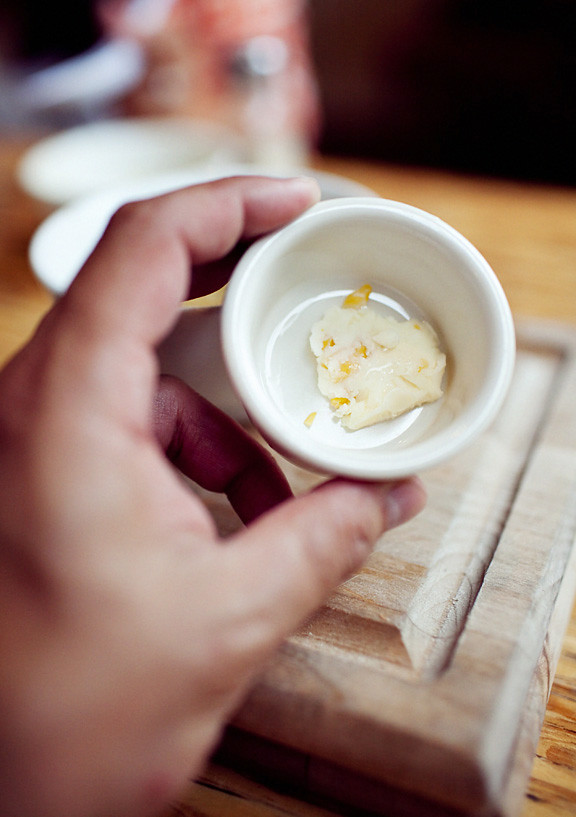Winter is coming and for Jeni and I it means one delicious thing to add to the menu: hot pot. But the problem is, she being Japanese, loves her nabemono, Japanese hot pot. Me being Chinese, I love Chinese/Mongolian style hot pot. There isn't really a difference between the cultural versions of hot pot, but rather the sauces are what makes it unique. The Chinese typically use plain water from the start, but I myself really enjoy Mongolian style hot pot because it's flavorful right from the get-go. After all, Mongolians did invent hot pot and brought it down to China, probably Sichuan (Szechuan) first. They even invented the style of food called Korean BBQ in which meat was grilled upon metals shields and open fire. If you've eaten at Mon Land Hot Pot or Little Fat Sheep, then you've had this flavorful dish. The soup used for dipping/cooking is simply an awesome array of over 35+ ingredients that really creates a nice aroma throughout your house. And for us, there's nothing more homey than a hot pot meal.
So rather than push each other's button on which type of hot pot we should do, we did a little compromise. A remix basically. We both get to buy our own goodies, use our own sauces and enjoy. She likes udon, I like my bean thread vermicelli. She hates my fish cake but throw in some dumplings to make her happy. Luckily, she digs the Mongolian flavor and I like this kimchi flavor package she uses from time to time. So everyone is happy. Here's what we eat.
According to a waitress at Little Fat Sheep, she said there are over 50+ ingredients for their hot pot. Forget trying to recreate this at home and look for this brand with an imitation 'little sheep' cartoon on it. It even SAYS 'fat sheep' in Chinese too. I think this one tastes the most like Little Fat Sheep and Mon Land Hot Pot and will cost you only $1.79. They have two flavors... the one pictured above is regular and there is a spicy one. What we usually do is use the plain one for the base and add the spicy one in for kick – probably only 3-4 tablespoons are needed. I got this at the Shun Fat Supermarket on San Gabriel Blvd. & Valley Blvd. in San Gabriel. These were so good I bought like 15 packs of each flavor, walking around like I'm on that Supermarket Spree gameshow.
This is the ingredient that separates Mainland China (typically Northern) from the rest of Chinese cuisine. It's cold up there and they like food that will keep them warm inside, even numbing the mouth. These is red peppercorn powder, or as its labeled, prickly ash powder. One teaspoon of this and the packaged broth is taken to another level. It has a slight 'limey' taste on the tongue, but it's really a numbing feeling.
You can simply pour the flavor package into a pot with water and proceed to eat. But to really call it your own, you can try adding a few things. I like to add shrimp shells, 4-5 ginger slices, daikon and some garlic. Adds a real nice flavor to it all.
Here you can see the Japanese and Chinese melting pot in action. I've got my Chinese/Chiu Chow meat/fish balls and she's got her beef and fish cakes.
In Chinese hot pot, you usually eat napa cabbage, spinach and hollowed morning glory. But napa cabbage is the common denominator in our remix. Along with Japanese leeks, dumplings and usually 3 types of mushrooms including shitake, king and shimeji. King mushrooms are the best because you can cut them somewhat thick for a 'meatier' texture.
In Chinese hot pot, this is a popular condiment: Bullhead satay barbecue sauce (sa cha jiang). A potent sludge that is made with chilis, dried shrimp, small fish, shallots and oil. I cannot live without this sauce. A lot of people use this differently and I was taught by my parents to add an egg into this sauce with some soy sauce, green onions and cilantro. Some people like vinegar in it as well. Either way, everything that goes into the hot pot will be dunked in this sauce. Mmmmm.
Jeni likes these sauces. On the left you have goma dare, which is a sesame sauce. She will grind fresh sesame seeds with her mortar and add this for a nice aroma. On the right, you have ponzu, a citrus-based sauce that is as dark as soy sauce but is made with mirin, vinegar and seaweed. Both are solid sauces.
And here are a few important utensils: chopsticks and scooper to get the runaway bits.
I'm up for trying new hot pot ingredients or sauces. How do YOU hot pot? Thanks for reading.
